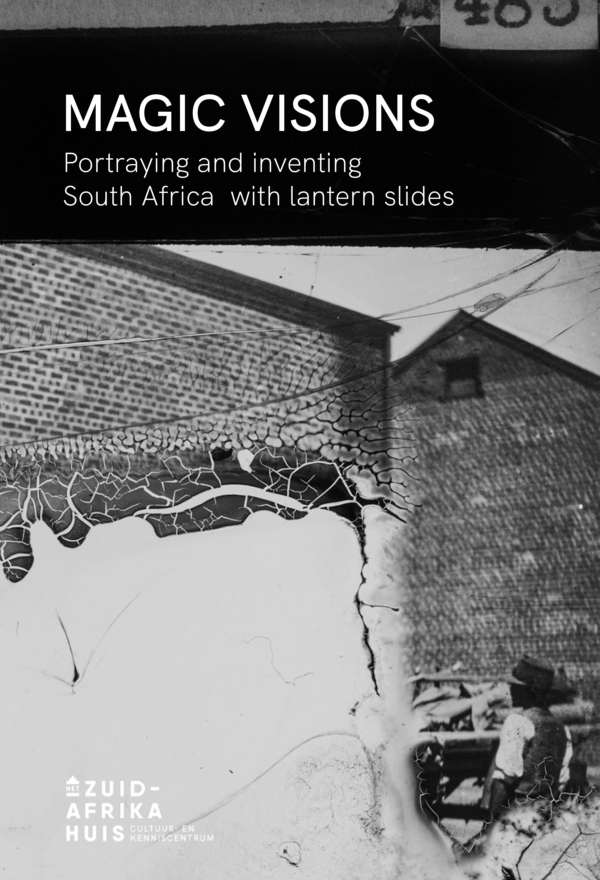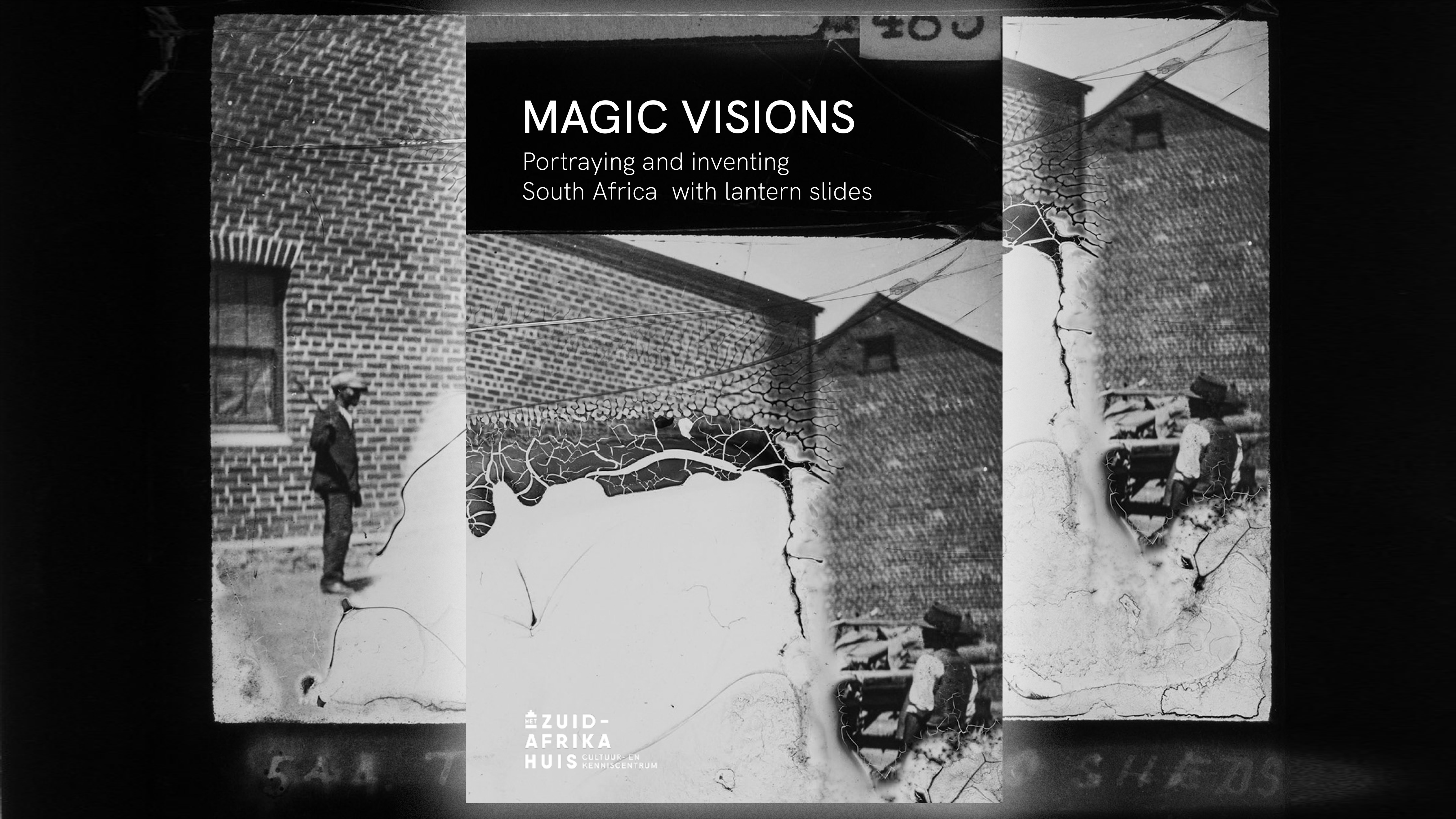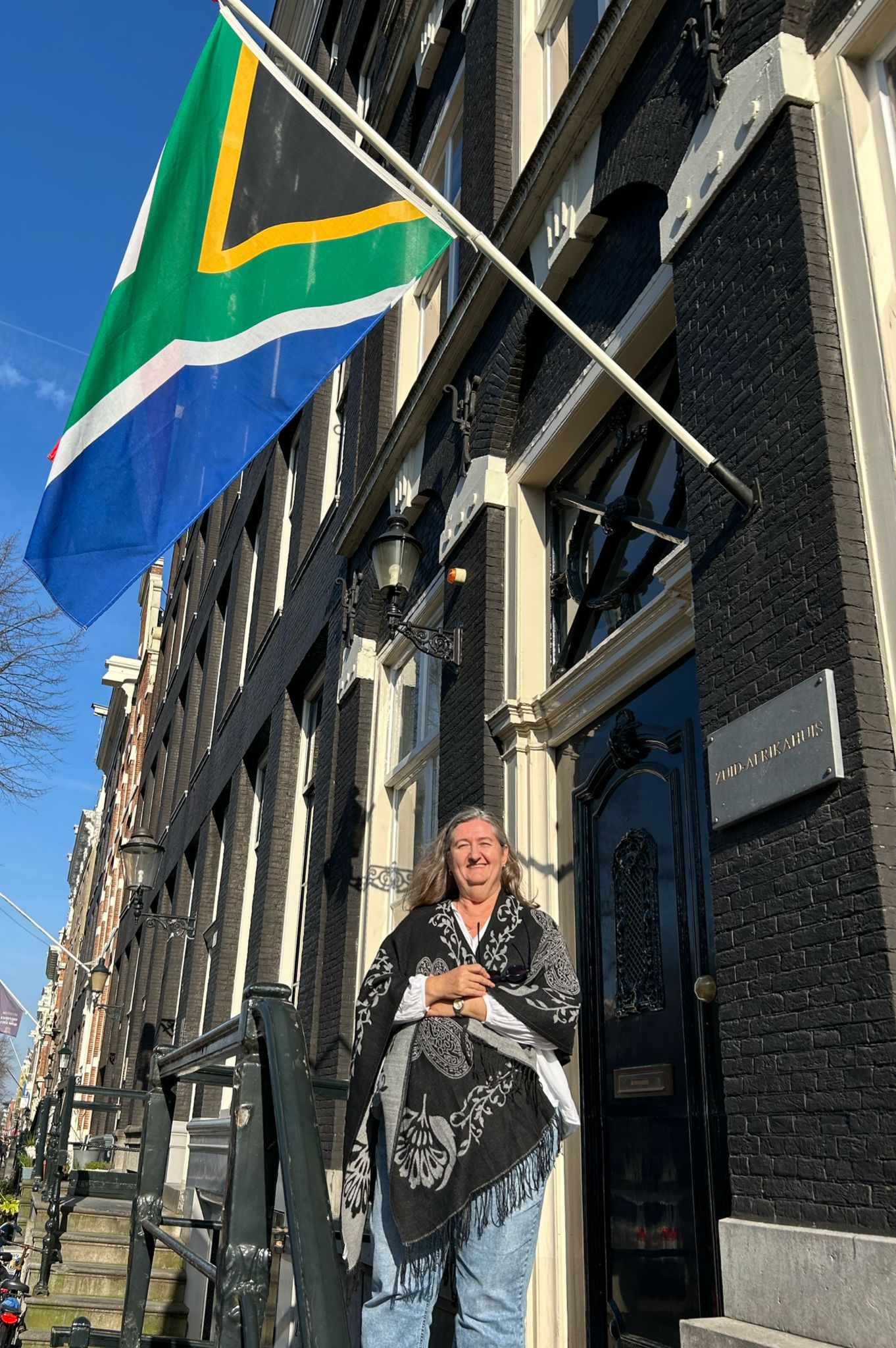Magic Visions: Portraying and Inventing South Africa with Lantern Slides is a profoundly original and fascinating body of work. The book muses upon a collection of magic lantern slides which lived in the attic of the Zuid-Afrikahuis. After remaining out of sight for a number of decades, the collection of slides was brought to light ahead of the house’s renovation project in 2014-2015. This occurrence happened when a few of the boxes of slides literally fell in front of the feet of the resident researchers – remaining true and in keeping with their characteristic nature of being mysterious and alluring. These slides consisted of imagery of South Africa and date back to the early part of the 20th century. Collectively, they were used to promote, and possibly ‘brand’, South Africa with the intention to attract travel and emigration. This was done through information evenings organized by the Nederlands Zuid-Afrikaanse Vereniging (Netherlands-South Africa Association, NZAV), whose aim was to nurture and strengthen ties between the Dutch and the Afrikaners.
This encounter and rediscovery led to a series of questions, concerns and processes that catalysed and formed this compelling book. This includes considerations around restoring the slides; critical reflection around the necessity to conserve the slides; procedures of analogue-to-digital rendering and archiving; and an interrogation of the archive’s historical context and function. The inquiry led to many insightful and thoughtful considerations by the sixteen contributing writers and researchers. Jeltsje Stobbe, Rosa Deen and Margriet van der Waal, edited the book and contributed to the prologue and epilogue which sets up the conceptual trajectory of the book.
Beginning with the consideration of conservation as care, Stobbe positions the discussion towards important considerations around the practice of archiving and its challenges. Faced with material, social and political concerns, the necessity of exploring new connections and re-invention were solutions that were undertaken. Not hiding the implications around the collection’s entanglement with colonialism, the writers sought to excavate the interconnectedness of ‘what is present’ and ‘what is absent’; ‘what is current’ and ‘what has the past’. Deen follows this trajectory by elaborating on the purpose of the images from the collection and evokes questions around their representation; the imperial nature of the gaze; and considerations of that which was not captured during the time of production. She draws our attention to the Natives Land Act of South Africa (1913) which assigned more than 90% of the land to its white population. This territorial segregation was complicit in racialised labour divisions, both of which are evidently captured and portrayed in the images of the collection. Deen goes on to provide insight on how these images present a glimpse of some of the earlier sociopolitical mechanisms that led to South Africa’s apartheid regime in 1948.
The book consists of twelve remarkable essays which explore the magic lantern slide collection, from a dynamic and multiperspectival approach. These essays fall within three important and compelling subcategories: Collection; Landscape and Pedestal. The subcategory, Collection, is covered by the writing of Ida Sabelis, G.J. Schutte, Sarah Dellmann and Carol Hardijzer. This section covers important themes and considerations around the slides, including the interplay between the familiar and unfamiliar; the aesthetics attempts towards a ‘reportage style’; presenting South Africa as a ‘legitimate place to be’; and analysing the ‘latent’ state of the lantern slides.
Under Landscape, we find the writing of Danelle van Zyl-Hermann, Rosa Deen, Hanneke Stuit, Ena Jansen and Leonor Faber-Jonker. This intriguing section considers the slide’s portrayal of train travel; the threat towards wild flowers of the Cape by imported species; the portrayal of the South African countryside as idyllic both in terms of landscape and social hierarchy; the clash of viewpoints between a burial site and a picturesque vantage point; and the possibility of reimagining the slides through experimentation and transformation.
The subsection, Pedestal comprises of writing by Vincent Kuitenbrouwer, Frans Kamsteeg and Harry Wels, and Eep Francken en Olf Praamstra. This important section considers South Africa’s statues and memorials, as connected with ‘cultural diplomacy’; hidden ironies of these statues are summoned, as they point to hostile relationships between the British and Afrikaners during this period; and how objects turn into icons, through the process of stabilizing ties with their hegemonic heritage and origin. The collection of essays, that make up the book, were written by leading Dutch and South African authors and researchers related to the study.
This book takes on the important role of seeking to understand and contextualize the magic lantern slide collection, while also interrogating the systems of power that link it to its colonial and imperial legacy. Through uncovering a myriad of different perspectives, both latent and interrelated to the collection, it provides a compelling and rich contextual understanding of the archive. Margriet van der Waal concludes with an Epilogue which ties many of the important themes and critical points of discussion together – while also providing more insight. She describes the slides as possessing both a ‘puzzling and ambivalent allure’. She also reminds the reader that many questions still remain open. The book ends by encouraging new and further research to be done with the collection. To support this, the digital archive of the collection is made accessible to the public. This is a fascinating book that demonstrates the importance of dynamic modes of research, re-thinking/thinking-together and interdependent approaches of scholarship; when unraveling the complexities of modernity’s geopolitical histories.

MAGIC VISIONS, Portraying and inventing South Africa with lantern slides.
Edited by Jeltsje Stobbe, Rosa Deen and Margriet van der Waal | February 2022
Digital | free download | 270 p.
ISBN 978-90-830385-3-7
 30 april 2022
30 april 2022

